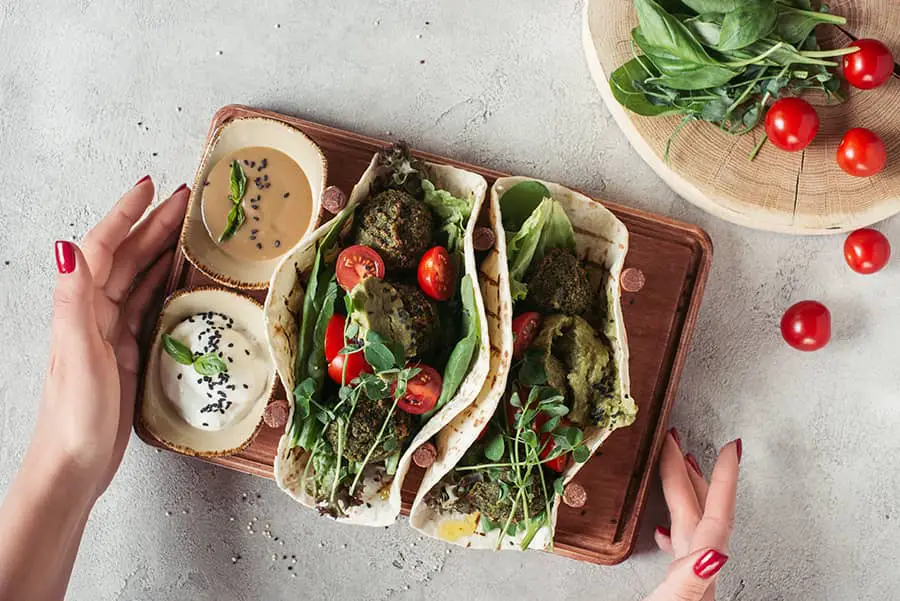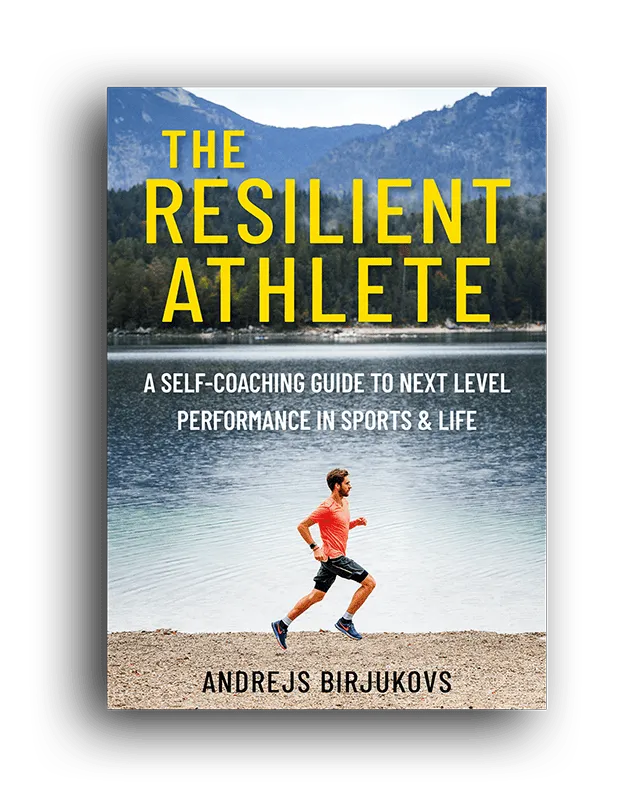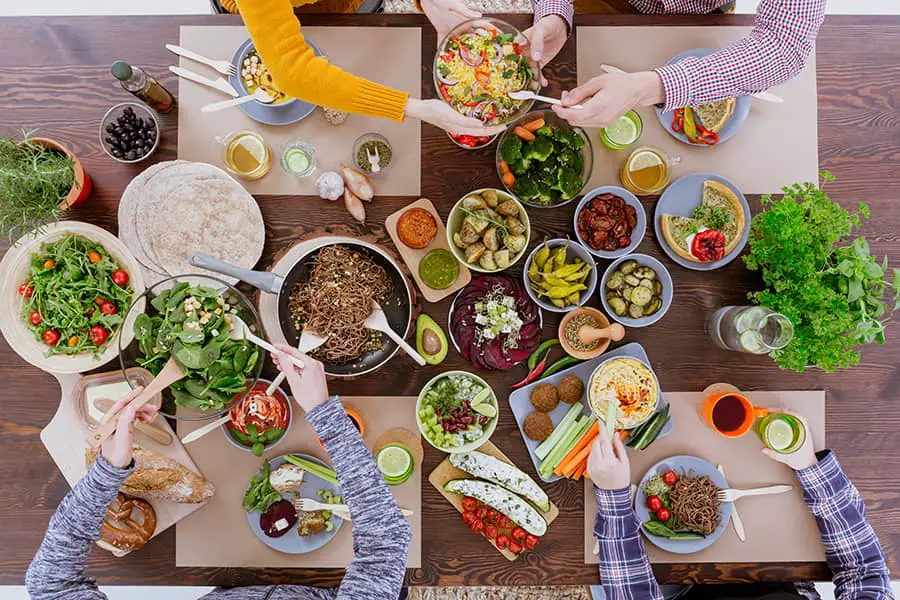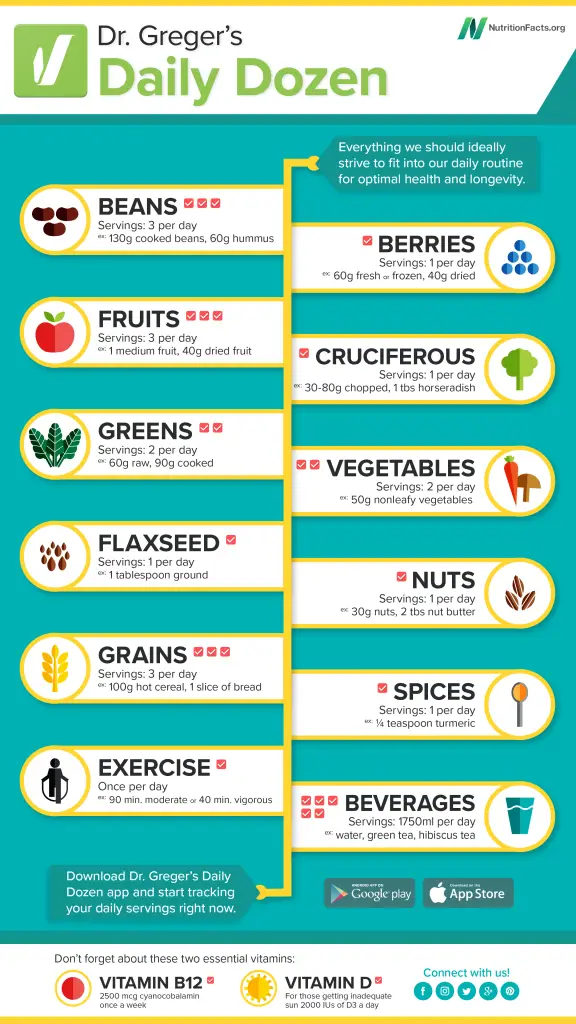You know that feeling when you learn something and have an ‘aha’ moment? When things you experienced or witnessed in the past start to click into places? That’s called a breakthrough and feels like a new world just opened up. That is what I experienced while reading Dr. Greger’s book and now sharing in the How Not To Die summary below.
Ironically, I received How Not to Die: Discover the foods scientifically proven to prevent and reverse disease as a gift from a friend whom I earlier suggested an evidence-based resource that Dr Greger M.D. (the author) built to discover how different foods affect our physiology – nutritionfacts.org. Now, a few years later the boomerang came back. And I’m glad it did!
While reading the book, I experienced a breakthrough on average every ~20 pages. Yep, I caught myself thinking ‘oh wow, so that’s how it’s working in our body’ that many times and felt thankful for the nutritional choices I’ve tested and made so far.
But I’m not stopping there.
How Not To Die book summary – 5 key takeaways
Double-spoiler alert.
First of all, it’s a big and intimidating book – I postponed reading it for a long time because of its 450+ pages. Second, it emphasizes the problems with diet focused on animal products. In it’s essence Dr. Greger M.D. shares that the only diet that truly nourishes us and stood the test of time & research is the whole food plant based diet. So, if you’re a committed meat-eater or have strong beliefs, that’s ok – I’m here to share my learning, not to change your mind.
In fact, I am sceptical myself. Which is why I loved that every claim in the book is well-researched and backed by science (the book has a total of ~2,000 citations to specific studies). Personally, I’m not eating meat & eggs since 2017 and could relate to a lot that was shared in the book. In fact, after my switch, I started noticing many professional athletes (especially aged 35+) going plant-based because of the extra recovery benefits they’re experiencing.

But this blog post is not about plant-based eating (if you’re interested in one, let me know. I can share my experience & tips). Instead, here are 5 universal takeaways I’m applying for myself and am sharing with my athletes to improve performance. In no particular order:
#1 High salt intake elevates blood pressure and causes poor sleep
Sodium is an essential nutrient and is responsible – among other things – to move the water from the intestines to the working muscles. We get the small necessary amounts of it with vegetables and other natural foods. However, if we consume too much salt the body may respond by raising blood pressure to push the excess fluid and salt out of the system.
Even just a single salty meal can raise the blood pressure over the next three hours.
So, just imagine what a ‘salty’ dinner (i.e. including ‘party snacks’ like chips/ burger/ fries/ pizza) does to our sleep… Yep, it messes it up and for the first half of the night our body is just trying to normalize everything and calm down.
But it’s not only sleep that a ‘salty diet’ is affecting. It’s everything
In one of the studies mentioned in the book they took an average American consuming a typical Western diet, a sub-elite runner averaging ~80 miles per week on the same diet and a vegan ‘couch potato’ (someone who does zero exercise and is generally not active). The first person had expected hypertension (high blood pressure), the runner who exercised 1-2hrs every day (and probably sweated out most excess sodium) had a ‘normal’ blood pressure of 120/70. And the vegan couch potato? He had an even lower blood pressure of 110/70 – and that’s without doing anything. His diet alone is reducing the impact on his arteries.
I already shared in one of my newsletters how stress affects performance through blood pressure. Controlling salt intake (and, in particular, avoiding salty snacks in the afternoon) might be something to consider to optimize recovery even further.

The Resilient Athlete
A Self-Coaching Guide to Next Level Performance in Sports & Life
Are you aiming to become a resilient athlete who is able to withstand any pressure? Be able to jump on any opportunity? Take any challenge life throws at you head on?
Then this book is for you.
#2 Saturated fat increases insulin resistance and impairs glucose use
One of the functions of insulin is to move the glucose from the blood into working muscles. However, saturated fat prevents glucose from penetrating normally into the muscle tissue. Think of it as a ‘wall’ that is created between bloodstream and the muscle. The more fat we have/eat the thicker the wall and the worse our ability to move the glucose into the muscles to use it. That’s called insulin resistance – when the body produces insulin, but it doesn’t work well, so the body requires more.
This is one of the big reasons why some people people eat tons of carbs and are very lean and others gain weight from just smelling the pizza. Pizza = saturated fat from cheese + carbs from the dough. For the latter group those carbs are simply not used in the muscles because glucose does not penetrate the wall of saturated fat.
On top of that, saturated fat contributes to inflammation. This again slows down recovery and puts the body at risk of infections and other diseases.
This was my experience with a plant-based diet back in 2017. I switched meat & most of the dairy in my diet to tofu, beans, lentils and oils. After I found the right amounts I noticed that my recovery went through the roof and I had more energy overall. Even muscle soreness never lingered for more than a day. Moreover, over a span of 3-4 months I dropped from 14% to 10% body fat with no extra effort.
So, one big takeaway from this is to swap saturated fats (i.e. bacon, butter, dairy) for unsaturated ones (avocado, nuts, seeds). That way the body will be able to absorb energy from food better.
#3 Dehydration results in poor physical and cognitive performance
Most of us are in a state of mild dehydration at any point of time. I always emphasize how water is heavily involved in the production of energy and the less of it we have available, the more sluggish we feel. Athletes quickly notice how vital of a role water plays in our metabolism. Performance during a training session with water intake is totally different to the one without.
But it’s not only physical performance. Our brain is 75% water. That means dehydration affects our cognitive function as well. So, all the good habits and important decisions are way harder to do in a state of dehydration. Not to mention the drop in the willpower and lack of motivation.
In the book there is a reference to a cool study where they randomly assigned 9-11 year old kids (not even adults) 250ml of water before taking a test. Guess which group performed better? The one who had a large glass of water before the test.
How to tell if you’re hydrating well? If you gulp some water and pee most of it out, you’re all topped up. But if you drink a bunch and your body keeps most of it, then your tank was running low.
Read also: Top 10 Endurance Athlete Diet Mistakes And How To Avoid Them
#4 Antioxidants heal cell damage caused by oxidative stress
In the How Not To Die book summary of a so-called concept ‘mitochondrial theory of ageing’ was presented. According to that, over time free radical damage (from oxidative stress) to our mitochondria leads to a loss of cellular function and reduces energy production capacity. Put simple, it’s like our phone’s battery capacity – over time the maximal capacity gets lower and lower.
Free radicals are unstable molecules that circulate in our body and result either from normal processes or from external sources (i.e. exposure to X-rays, cigarette smoke, air pollutants, alcohol and even diet). It’s important to note that this cell damage can be slowed down and to some extent even reversed. One way is kinda obvious – reduce exposure to things like smoke, alcohol, air pollution, etc. But another is by consuming more anti-oxidants which pair with free radicals and, essentially, diffuse them.

Where to get these anti-oxidants? Well, meat, fish, eggs & dairy have barely any, but colourful plant foods have tons. So, essentially fruits, vegetables and especially berries. The deeper and richer the colour, the more anti-oxidant power it carries. And no, taking anti-oxidants in a supplement form does not seem to work – put head to head against real foods in a study they provide barely any benefit.
Fun fact: one other study tested oxidative damage following bicep curls – for those who took 1,000mg of Vitamin C supplements ended with more oxidative damage. That means recovery from a workout would take longer if one takes a VItamin C supplement, compared to eating fresh berries (read below).
Short takeaway here – less oxidative stress means quicker recovery, more energy, ability to tolerate more training load and, eventually, improve more. So, load up on those fruits, veggies and berries.
#5 Specific plants are very effective at treating muscle soreness & inflammation
Athletes are very familiar with inflammation. Delayed onset muscle soreness (DOMS) is muscle pain that develops 12-24 hours after intense or prolonged exercise. It’s essentially a result of micro traumas in the muscle tissue that become inflamed and can adversely affect athlete’s performance.
There is a tasty way to treat it – berries!
Muscle biopsies of athletes have confirmed that eating blueberries can significantly reduce that exercise-induced inflammation.
Other studies confirmed that cherries have a similarly strong anti-inflammatory effect and it translates into faster recovery time, reducing the strength loss from excessive bicep curling from 22% down to only 4% over the subsequent 4 days. Wow! This effect works not only in strength training – follow up studies have shown that cherries also help reduce muscle soreness in long distance runners and speed up recovery from running a marathon.
Read also: Legs Sore After Running? Try These 14 Proven Remedies To Relieve It
Probably my personal favourite takeaway from that part of the book is that apparently 300g of watermelon (my soul food) eaten prior to intense exercise was found to also reduce the severity of muscle soreness afterwards.
Seems like the smoothie/ energy shot/ superfood bar craze does have some science behind. But why design (and overspend on) new products when it’s right there!
How Not To Die Summary bonus – Dr Greger’s daily dozen pdf
One key idea Dr Greger proposes in the How Not To Die book is Daily Dozen. That’s his own framework how to navigate the nutritional choices on a daily basis which foods and activities to include to stay as healthy as possible. In a way, one can think of it as a book summary – just without the references, science and 450 pages.
Take a look at the Dr Greger’s daily dozen pdf and download below:


